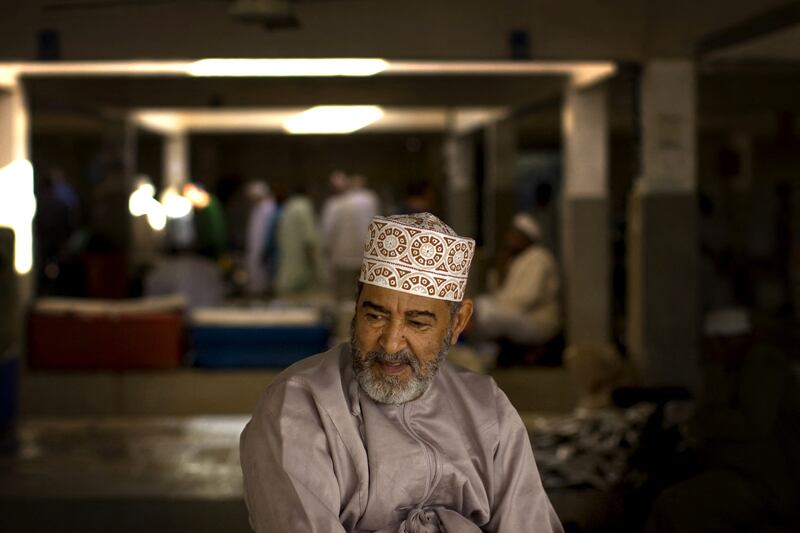Scientists say the smaller proportion of elderly people in the Gulf may be the key factor limiting coronavirus fatality numbers in the region.
A new study has taken a closer look at why GCC nations had far lower Covid-19 death rates than European countries did early in the pandemic.
Researchers based in the US and Jordan used World Health Organisation data to calculate the case fatality rates (CFR - the proportion of deaths among people with a confirmed case) for all GCC nations, and compared them with data for 33 European countries.
“Comparing individual GCC and European countries with similar numbers of confirmed Covid-19 cases showed that the mortality was five to 10 times higher in Europe. Even outside Europe, only a few countries reported such low CFR [as the GCC nations],” they wrote.
There have been 739,190 cases of Covid-19 in the UAE since the start of the pandemic, resulting in the deaths of 2,129 people (as of Saturday, October 22).
In Saudi Arabia, there have been 548,205 cases and 8,776 deaths, while in Bahrain there have been 276,461 cases and 1,393 deaths.
Analysing data up to May 12 last year, the researchers calculated that UAE’s CFR was 1.06 per cent, while in Kuwait the figure was 0.69 per cent, in Saudi Arabia 0.62 per cent, in Oman 0.45 per cent, in Bahrain 0.15 per cent and in Qatar 0.06 per cent.
“Within Europe over the same time period, ten countries had CFRs above 10 per cent, with the majority above 3 per cent,” wrote the researchers, who were based at the University of Jordan and Saint Mary’s Medical Group in Indiana in the United States.
Among the European countries, rates were similar to the GCC in just two nations, Belarus and Iceland, which each had a CFR of 0.56 per cent.
“The difference in age groups between the Gulf region and Europe may be the most important factor," the researchers said.
"Mainly due to a younger population and a smaller elderly demographic in the Gulf region.”
The fact that increased age raises the risk of serious illness or death after catching the coronavirus was established early in the pandemic.
Last year, a study of infection fatality rates (IFR, the proportion of deaths among all people infected) in England found a rate of 0.5 per cent in people aged 45 to 64, 3.1 per cent in those aged 65 to 74, and 11.6 per cent in people aged 75 and over.
This trend of older patients being more at risk of dying from virus-related complications, coupled with stark differences between the Gulf states' and European nations' elderly populations, may have contributed to the CFR pattern seen in the study.
In the EU as a whole, 19.2 per cent of the population is over 65, according to figures for the bloc from 2016.
This compares with the UAE, for example, where just 1.16 per cent of the population is over 65, according to 2019 figures reported by the World Bank, while in Saudi Arabia it is about 3 per cent.
Titled “Covid-19-associated mortality across the countries of the Gulf Cooperation Council and how it compares to Europe: A comparative study,” the research was published last month in the Qatar Medical Journal.
UK Health Secretary warns Covid-19 cases could soon top 100,000 a day

While saying age may be the key reason behind the CFR pattern between Europe and the GCC, the researchers also said the number of Covid-19 tests carried out and variations in the reporting of Covid-19 deaths may also have influenced the results.
That European countries were exposed to large case numbers earlier, when governments and healthcare systems were less well prepared, may also have caused these nations to have higher CFRs.
However, differences in the quality of health care were “not the main factor for the lower CFR across the GCC”, the researchers said.
GCC nations tend to have slightly lower healthcare quality and access index figures, a measure that looks at how well developed a country’s healthcare system is, although there is much overlap between the two regions.
Dr Davinder Pal Singh, a cardiologist at NMC Royal Hospital in Dubai, agreed with the study that the low proportion of elderly people in the GCC was a key factor in explaining differences in death rates.
“In Gulf countries, the population is middle-aged. The elderly population and the chronically disabled with illness is very low,” he said.
“In Europe, the elderly population is much higher. They’re more likely to be getting chronic illnesses.”
The quality of healthcare would, he said, be unlikely to account for the stark differences between the GCC and European countries, with facilities and treatments “equally good” in the two regions.
Speaking of the current situation in hospitals, Dr Singh said that with the UAE’s population now highly vaccinated, there have been significant improvements.
The country is now recording fewer than 20 deaths per week and sometimes fewer than 10, compared with more than 100 deaths per week during a period in February.
“The pandemic part is over,” Dr Singh said. “We don’t face so many patients, so much severity. It’s much better.”












